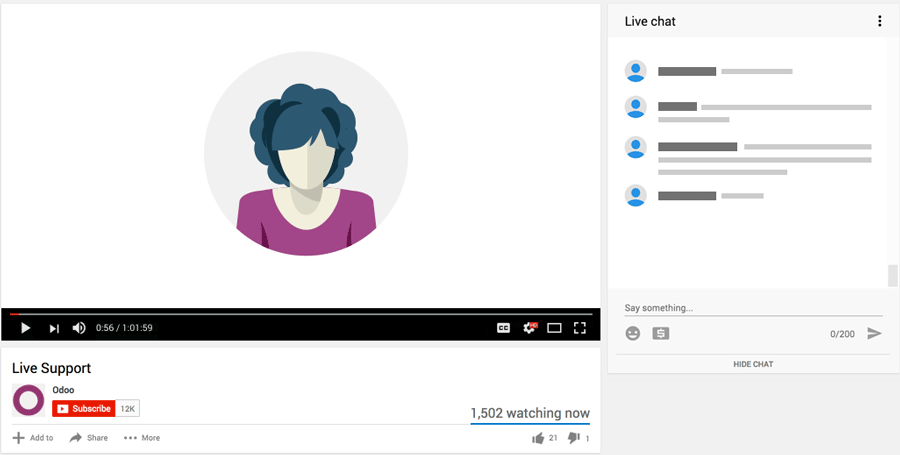-
Keynote - Industries
Fabien PinckaersHecho
-
Opening Keynote - Unveiling Odoo 19
Fabien PinckaersHecho
-
From Legacy to Live: Executing a Successful Data Migration to Odoo
Serena PalazzoHecho
-
Help your customer move on from an unsupported Odoo Version
Jose MonteroHecho
-
Comprehensive Implementation of Odoo-Based Education Management System
Shivani TyagiHecho
-
Empowering Smart Manufacturing: Zerynth’s Connector for Odoo in Action
Fabio CacciapuotiHecho
-
Odoo for custom equipment & machinery companies
Ides Van HoveHecho
-
Accelerating Sales and Workshops with Odoo Studio
Riccardo FioreHecho
-
How AI + Odoo Are Automating B2B Supply Chains – Fast, Scalable, Seamless
Patrick ThelenHecho
-
Odoo + Talento Tech: How Open ERP is Transforming the Future of Youth in Southern Brazil
Carlos Massa Ratinho JuniorHecho

I’m a developer at QUBIQ, working across different areas of Odoo — from backend logic to website customization and performance tuning. While my work spans accross many parts of the system, I’m especially interested in anything that pushes the technical quality of a solution: performance, clean architecture, and long-term maintainability.
Over the past two years, I’ve worked with Odoo versions 16, 17, and 18, helping build real-world solutions that are both functional and technically solid. One of the areas I enjoy the most is improving the Odoo Website module — making it faster, more scalable, and easier to adopt in demanding environments.
I care deeply about technical excellence, and I believe that even small improvements in code quality or system design can make a big difference — especially when building tools that people rely on every day.
As Odoo applications scale in complexity and traffic, performance optimization becomes essential — across frontend, backend, and everything in between. In this talk, I’ll present a Redis-based caching layer we’ve developed at QUBIQ to accelerate Odoo in a clean, maintainable way.
The system integrates natively with Odoo and supports multiple caching use cases — including views, controller responses, and custom logic — all without touching templates or writing extra code. In many cases, enabling caching is as simple as ticking a checkbox.
It handles context-aware cache key generation, pattern-based invalidation, and Redis connection management automatically. I’ll walk through how it works internally, how we deployed it in production, and what kind of performance gains we’ve observed — including significant drops in response time.
The talk is a mix of real-world use cases and technical deep dives, aimed at developers and architects who want to push Odoo further without sacrificing clarity or maintainability.
